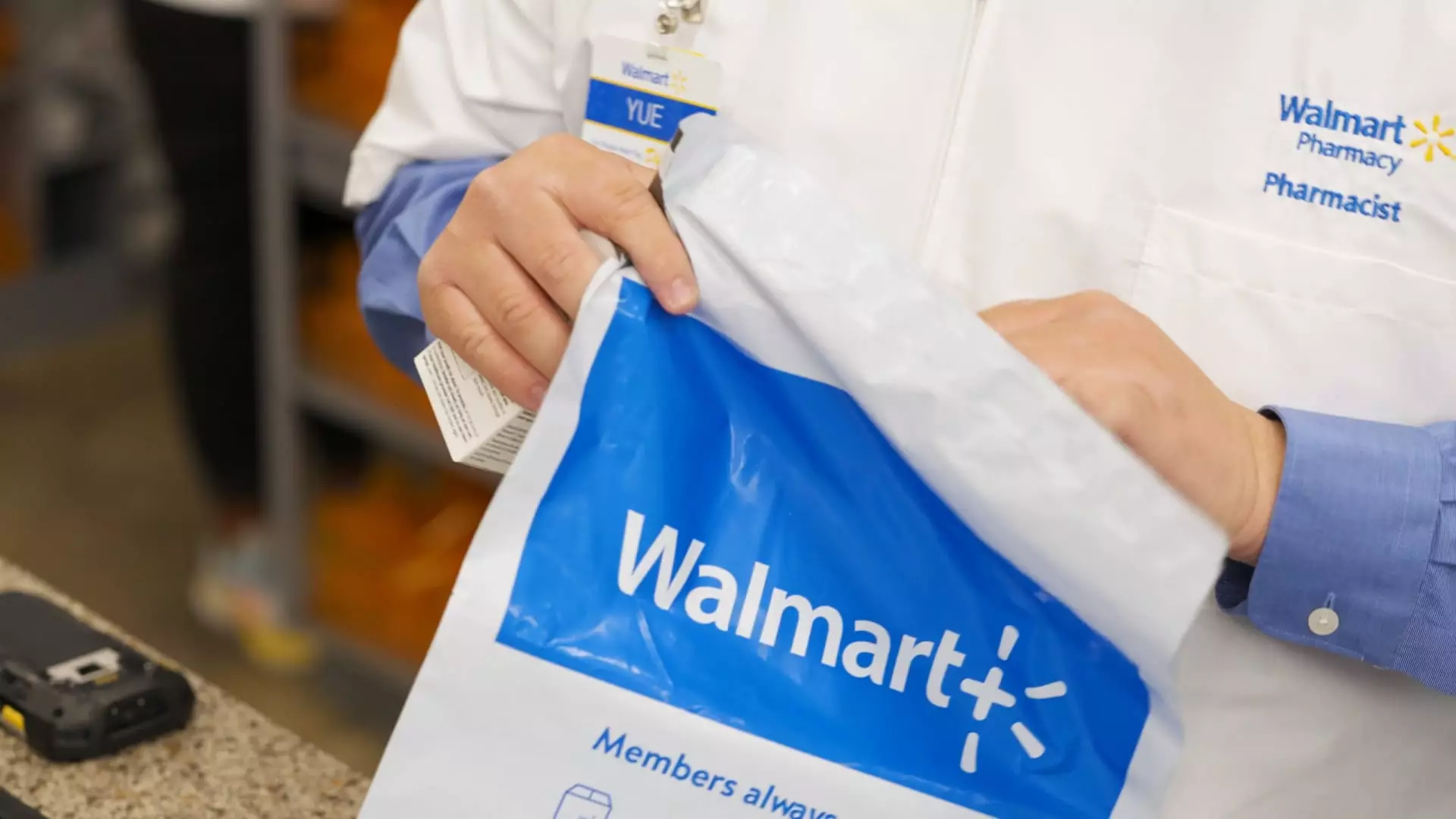In a rapidly evolving landscape of retail and pharmacy services, competition has taken on an intensified form as consumer needs change and market dynamics fluctuate. While traditional pharmacy giants CVS and Walgreens are shuttering numerous stores to stabilize their financial standing, Walmart is seizing the opportunity to enhance customer convenience by introducing prescription delivery services. This article delves into the implications of Walmart’s latest initiative, its impact on the pharmacy sector, and the broader context of retail challenges.
In a strategic move announced recently, Walmart revealed that it would begin offering prescription deliveries directly to customers’ homes, initially launching the service in six states: Arkansas, Missouri, New York, Nevada, South Carolina, and Wisconsin, with plans to expand to 49 states by January. However, North Dakota residents will be excluded due to specific state regulations. By providing this delivery service, Walmart is not only targeting convenience but is also seeking to wrest market share from traditional drugstore chains that have seen a decline in consumer interest.
Walmart’s approach includes integrating prescription deliveries with other products, allowing customers to order everything from medications to household essentials, thereby streamlining the shopping experience. This represents a significant step towards enhancing Walmart’s appeal to health-conscious consumers who prefer the convenience of single-delivery services. The fact that this delivery option emerged as the most requested service by customers underlines a growing trend which indicates a shift in consumer preference toward accessible and hassle-free shopping solutions.
As Walmart pushes forward with its innovative delivery strategy, CVS and Walgreens find themselves grappling with mounting challenges, including declining stock prices and profitability. CVS, for instance, which once held a commanding lead in the pharmacy market, is now under intense scrutiny from investors and analysts as it navigates a leadership change. The newly appointed CVS CEO, David Joyner, faces the daunting task of not only implementing cost-cutting measures — such as a $2 billion expense reduction plan and the closure of hundreds of stores — but also revitalizing a brand that has lost favor among consumers.
Similarly, Walgreens announced plans to close 1,200 stores over the next three years, citing the need to address an unprofitable quarter of its locations as well as fierce competition from online giants and discount retailers. This ongoing contraction reflects a broader trend affecting many brick-and-mortar pharmacies, as increasing operational costs and reduced reimbursement rates for prescription drugs take a toll on their business models.
Despite the setbacks faced by CVS and Walgreens, Walmart’s pharmacy segment remains a smaller player, holding only about 5% of the market share in prescription drug revenue as of 2023. However, its expansive footprint and low-cost pricing strategy position Walmart to challenge the status quo effectively. As evidence of this, Walmart’s stock has surged approximately 54% this year, a stark contrast to the sharp declines seen in CVS and Walgreens stocks. The delivery service could further cement Walmart’s role as a destination for wellness and health-related products, as its focus on value and convenience resonates with consumer expectations.
The integration of health and wellness into Walmart’s retail model further showcases its commitment to being a one-stop shop for customer needs. This aligns with a broader trend in retail where consumers are increasingly leaning towards brands that provide comprehensive solutions, integrating health services with everyday shopping. Notably, Walmart’s delivery service will charge standard fees while offering complimentary delivery for Walmart+ members, further incentivizing customer loyalty.
As Walmart forges ahead with its prescription delivery service, the implications for the entire retail and pharmacy landscape are significant. The evolution of consumer shopping habits, fueled by technological advancements and changing health care needs, will inevitably compel pharmacies to rethink their strategies. The emphasis on convenience, customer-centric services, and competitive pricing will be more critical than ever as companies strive to attract and retain customers.
While the success of Walmart’s initiative remains to be seen, it undoubtedly represents a pivotal shift in how pharmaceuticals are delivered to consumers. As traditional pharmacies recalibrate their business models to adapt to this new reality, the next phase of competition will hinge on who can deliver not just products but also comprehensive and accessible health solutions effectively.
Walmart’s entrance into the prescription delivery market underscores the growing importance of convenience and customer satisfaction in retail. As the landscape continues to evolve, both traditional pharmacies and new entrants will need to innovate to meet the changing demands of today’s consumers.

